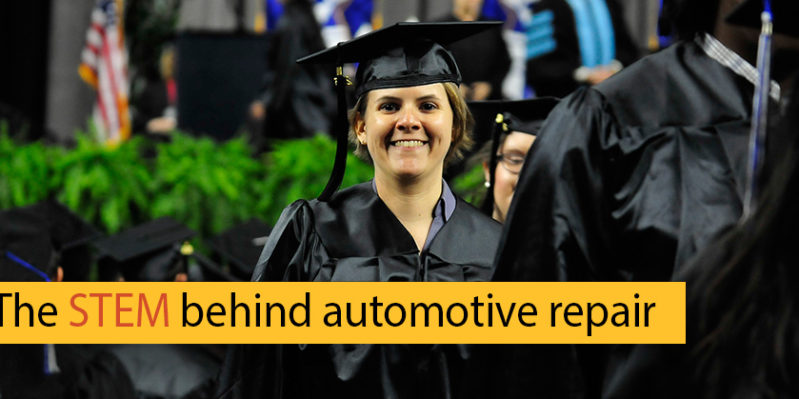
 More knowledge can equal a faster and more efficient repair
More knowledge can equal a faster and more efficient repair
Sarah Heasty is an automotive rock star. The recent San Jacinto College graduate was recognized for passing all eight areas of the automobile Automotive Service Excellence (ASE) exams to achieve Master Certification and Advanced Engine Performance Specialist Certification (L1), a rare feat among college students.

Sarah Heasty is a San Jacinto College T-TEN program graduate and works as a service manager for the DeLorean Motor Company.
Although she’s now certified through the Toyota Technician Training & Education Network (T-TEN) program at the College, her career has taken a unique turn back in time. She is now a service manager for the DeLorean Motor Company (yes, think of that car from “Back to the Future”). It takes a bit of skill to manufacture, repair, and to restore a vehicle. It’s part math, part engineering, and part technology as the automotive industry is constantly evolving to stay ahead of consumer demand. Does this mean that the automotive technology has evolved to a career that requires more knowledge of science, technology, engineering, and math (STEM) to become successful? According to Heasty, absolutely.
How are STEM skills used automotive?
“In the automotive repair industry, math skills need to be used quite a bit in order to get the job done right. There are always conversions that need to be done for measurements, and a technician needs to be able to clearly read and interpret their measurements in order to determine minimum thicknesses and tolerances when repairing a car so that the fix is done right the first time.”
Is engineering involved?
“Engineering skills are also required to be able to see in your mind’s eye how components are working (or not working) on a car so that you can plan the best way to get to them. Some areas of a car are under protective covers, or are internal parts to larger components and are not easily visible. Most of these repair jobs are broken down into black-and-white diagrams in your service manual, but if you are not able to successfully see these components going together in your head in a real world setting, you will not be as efficient or precise as someone who possesses those skills.”
How are computer skills utilized in auto repair?
“Automotive technology requires extensive skills in math and engineering, especially as cars become more and more computerized. There really isn’t a system left on a car today that isn’t tied into an electronic control unit (ECU) network in some way or another. Technicians need to be able to successfully trace wiring diagrams and schematics in order to locate a problem on a vehicle based on the symptoms presented, because there may not always be a trouble code that points directly to what the problem is.”
Would you encourage others to take up a few more STEM-related courses?
“If you are interested in pursuing a career in automotive technology, you cannot take enough electrical classes. Being able to take out a test light or digital multimeter and confidently begin diagnosing a car will save you from a lot of headaches and spinning in circles with multiple repair attempts.
Most dealerships have also transitioned to computerized repair manuals and scan tools, so basic computer skills are necessary to help you navigate them with efficiency, since time is money in the technician world. The quicker you can get a job finished, the quicker you can move on to the next repair.”
– Jeannie Peng-Armao
